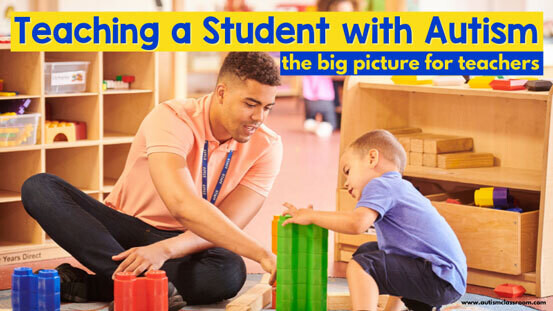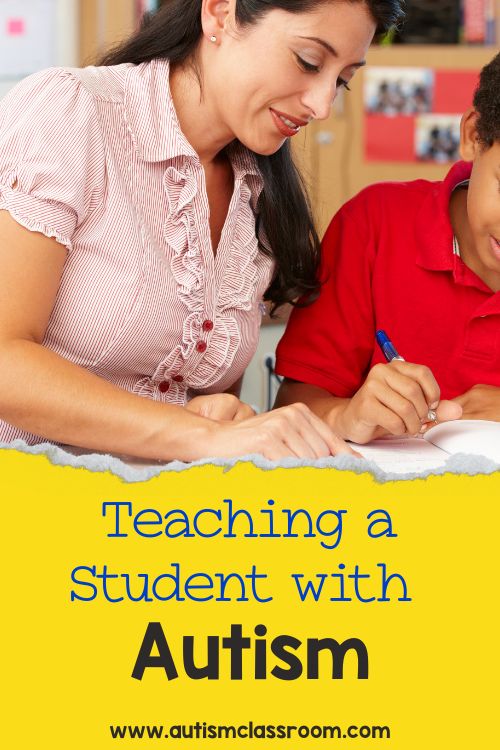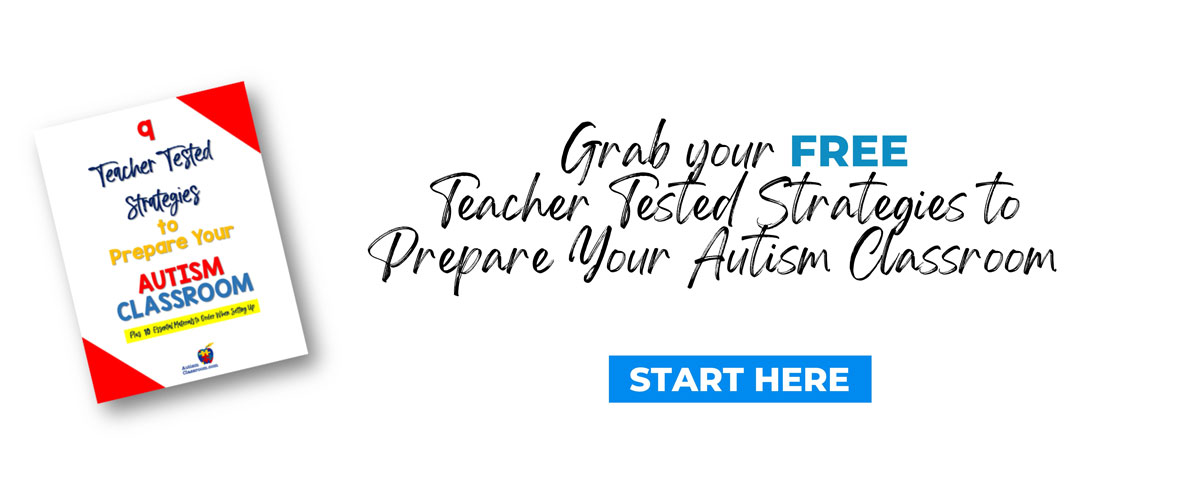Inside: Ideas for teaching a student with autism, the big picture for teaching and prioritizing skills when teaching students with autism.
The task of teaching a student with autism for the first time may seem so heavy. After all, meeting their educational needs requires another challenging level of diligence and consideration. Though the planning process may get overwhelming, it does not need to feel impossible. As long as you break down preparation into a few steps, you will create an environment where students with autism in the classroom can thrive. Let’s take a look at the big picture steps you should focus on in the autism classroom when teaching a student with autism.
- Setting Up Your Autism Classroom
When working with students with autism, it’s important to consider that they will spend the majority of their school days in a classroom. That is why focusing on design is a great first step to start. In particular, you should think about making your classroom as visually helpful as possible. Visual boundaries and directions can be made with a variety of templates, simple decorations, and art supplies. Purchasing bins for your students can also be a fantastic way to visually organize classroom materials and provide a convenient space for your student's items. Labels are great to store your items as well. You can also add large labels on the bins (check our free labels in the link) to make them easy to find and differentiate.
- Develop a Set of Classroom Management Guidelines
After your autism classroom is set up, it’s time to develop a set of classroom management guidelines. These guidelines are all based on providing structure for yourself and your students with autism, which includes a set of predictable rules, routines, and procedures. Once your students have internalized this structure, they will be more focused and on task as soon as they arrive. One example of a routine activity is to run a morning circle. This can engage the entire class in group activities and give them an opportunity to communicate how they are feeling.
- Prioritize Skills When Teaching A Student With Autism
There are plenty of skill areas that students with autism need extra support in. Here are some key areas that you can prioritize when working with students with autism.
- Social Skills: Although there is no set standard for how to teach social skills, there are general milestones you should strive for, like teaching your students how to recognize their own behaviors and identify emotions in others. You should set up frequent opportunities for students to practice communication and implement methods like video modeling, picture cues, social scripts, and more. See the social skills page of ideas here.
- Play Skills: The concept of play might look very different for students with autism. To help them build skills in this area, you will want to emphasize engagement, stock up on a toolkit of sensory toys, and try being a copycat. When thinking of play, one of the keys to teaching a student with autism is to routinely mix things up for your students to experience a variety of activities. Variety in play can make the playtime more interesting. See the play skills page of ideas here.
- Language and Communication Skills: Communication, both verbal and nonverbal, is essential for daily life. There are a variety of techniques you can implement to encourage communicative growth, like the Mand-Model technique or the Incidental Teaching technique. Language skills can also be acquired from helping students match objects, categorize words, and identify parts of the body. See the communication skills page of ideas to build nonverbal communication strategies and verbal communication here. See the language skills page to increase receptive and expressive language here.

- Learn How to Reinforce and Transition
A task is only as effective as a student’s motivation to participate in it to begin with. That’s why your next task in teaching a student with autism is to develop a set of reinforcers that the student likes and can motivate them to complete a task or to transition from one activity to another. Utilizing classroom objects like boxes can help you create reinforcement boxes meant for individuals or small groups. See the reinforcement skills page of ideas here. See the transition skills page of ideas here. And, don't forget to check out the rest of this blog for tips and resources for your special ed classroom. See some of the things we offer to help save time for teachers workign in a special ed class.

A (Huge) Bit More...
In four steps, you just learned the big picture foundation for how to teach a student with autism. Moving on from there to put everything together is the next challenge. Luckily, Autism Classroom has the resources you need to plan with ease and make an impact on your students with autism. Join our mailing list to get updates and tips on how to do this job effectively.


